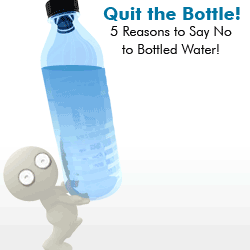
Water and Heat Stroke

Of all the ailments that can be caused by heat, heatstroke is the most severe and in fact, is considered a life-threatening emergency. This condition develops rapidly and requires immediate medical treatment.
Heat stroke is the result of long and extreme exposure to the sun and a person does not sweat adequately to lower body temperature. Elderly, infants and outdoor workers are most susceptible to heatstroke.
To explain what causes heat stroke, first, we must look at our body's cooling system. When active, our bodies produce a tremendous amount of internal heat, which we normally cool by sweating. However, sometimes in extreme heat, high humidity, or vigorous activity in either, the cooling system may fail, allowing heat to build up to dangerous levels. Dehydration goes hand in hand with heat stroke, as a dehydrated person may not sweat enough to cool their body.
To lookout for heatstroke you must be aware of these symptoms: headache, dizziness, disorientation or confusion, fatigue, seizure, hot, dry skin that is flushed but not sweaty, a high body temperature, loss of consciousness, a rapid heartbeat and hallucinations. If you notice someone with these symptoms, the first thing to do is get them out of the hot sun and indoors. Cool water should be applied to the skin and then fanned- this stimulates sweating. Ice packs should be applied to the areas and groin of the armpits. The person should also lie down with their feet elevated in perhaps an air-conditioned room. Sometimes, if conditions are serious, the person should be taken to the hospital for an IV to compensate for fluid and electrolyte loss.
When one must be in the hot sun, precautions can be taken to prevent heatstroke. And, the best thing one can do is drink plenty of water to keep hydrated-- before and during. Also, a spray bottle to mist yourself with water can prevent overheating. Think about the radiator smoking in an old car- you put a gallon or two of water, don't you? Do that same for your body- but remember, thirst is our only gauge, which malfunctions! This also means avoiding caffeine or alcohol. It is also recommended to wear lightweight, tightly-woven, loose-fitting clothes that are light in color. Sunglasses and/or a brimmed hat are also good.
Finally, think about the water cycle. The sun evaporates water. That thought alone should encourage water drinking while in the heat.





